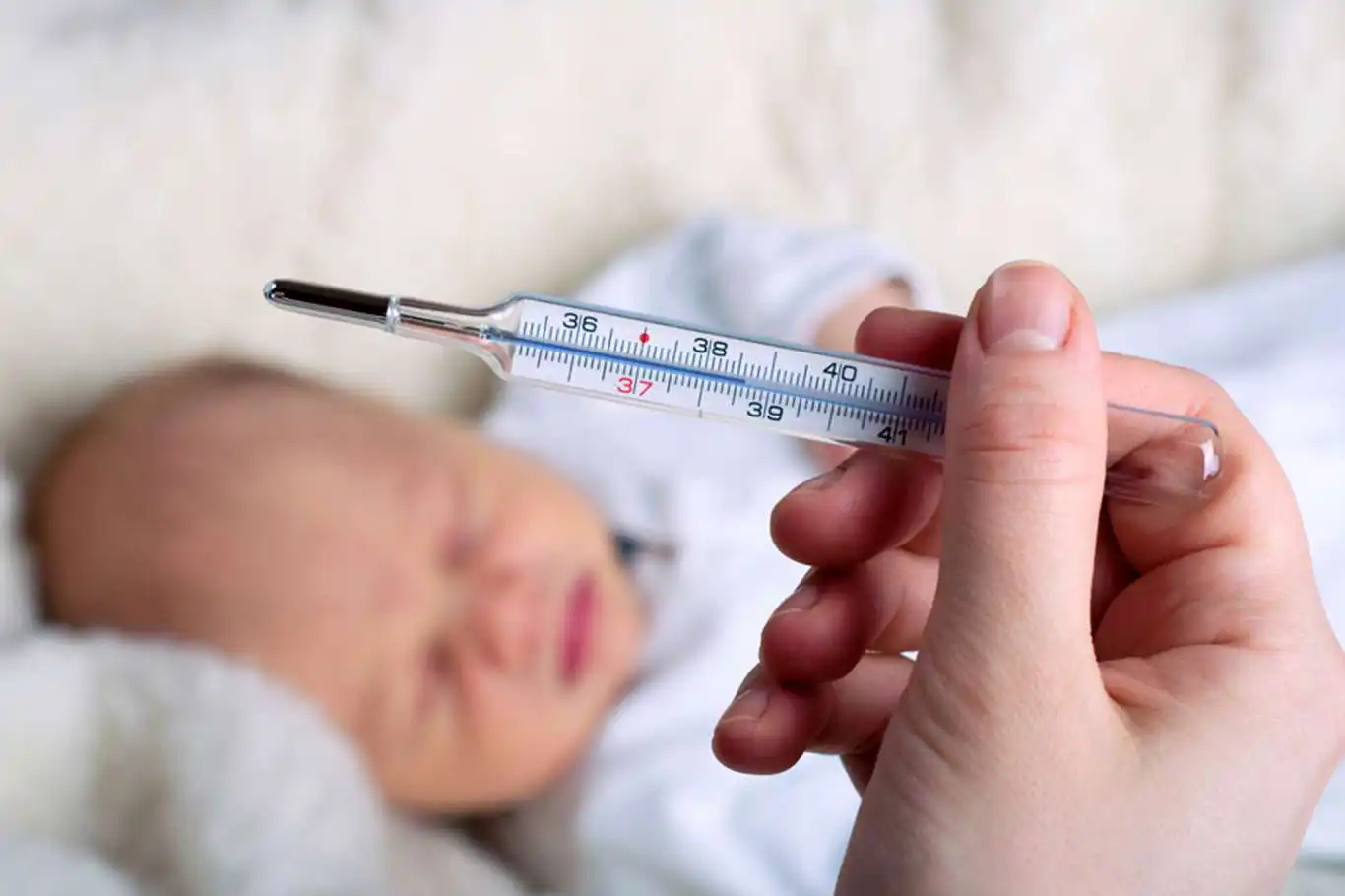I think the most worrying and most researched topic of every mother and father is fever. Of course, the most common search is how to reduce fever in children? Is fever dangerous in children? Let’s examine this issue together.
First of all, what is fever?
It can be defined as an increase in body temperature above 37.3 C in the armpit, 38.0 C in the ear and rectal (buttock) measurement. Fever is not as bad as you think, in fact, it has benefits. It is also an indicator of the body’s fight against infection. The immune-defense system works better with an increase in body temperature. Since blood flow will increase with fever in the infection area, defense cells work more effectively and this body temperature slows down the proliferation of germs.
What causes fever in children?
Although there are many reasons, the most common causes include infections, sunstrokes, rheumatic diseases. Mostly respiratory tract infections, intestinal infections, urinary tract infections are the causes.
Does fever harm the body?
It makes the heart and lungs work harder.Fever is a risk in cases such as febrile convulsions, heart and lung diseases. The fever should be brought down quickly. I must make it clear that “FEVER IS NOT AN EMERGENCY”.
What are the emergencies of fever?
- >40 C fever
- Baby less than 30 days old
- Extremely exhausted, depressed-looking child
- Changes in consciousness, restlessness, not recognizing parents
- Purple-violet spots that start all over the body and spread rapidly and do not fade with pressure
- Respiratory distress, food disturbance
How should we take the temperature? Which thermometer?
- Armpit digital thermometers: Safe to use. Mercury thermometers are dangerous in terms of poisoning if broken, but the new generation digital ones are safe.When using them, care should be taken to ensure that the armpit is dry and that the thermometer remains under the armpit during the measurement.
- Ear (Tympanic) thermometers: These are the products we frequently use in hospitals. There are also home type ones. Reliable, easy and fast to use. Devices with easy patient compliance.
- Non-contact (infrared) thermometers: Practical devices that have increased in popularity due to the pandemic. However, frequent calibration is required and if not done, they give inaccurate measurements.
- Smart thermometers with Bluetooth body monitors: They are still very new devices, there are not enough studies, but in a study comparing them with axillary measurement, they were found to be as accurate as axillary measurement. Their prices are also affordable, they can be practical for children who are very agitated and have problems with temperature measurement.
All of them are adequate devices for home use.
How to treat fever? How to bring down a child’s fever at home?
Drugs we use in the treatment of fever in childhood:
- Paracetamol: First choice, safe, few side effects, long onset of action, about 50-60 minutes. Available in syrup and suppository form.
- Ibuprofen: Second choice drug. Not recommended before 6 months. Onset of action is short, about 30 minutes. Syrup and suppository forms are available.
The choice of medication should be decided by your physician in the light of the patient’s age, diagnosis, fever resistance and any additional findings. This information is general information and it is recommended that you act in line with your physician’s recommendations.
Antipyretics are adjusted according to the weight of the child.

